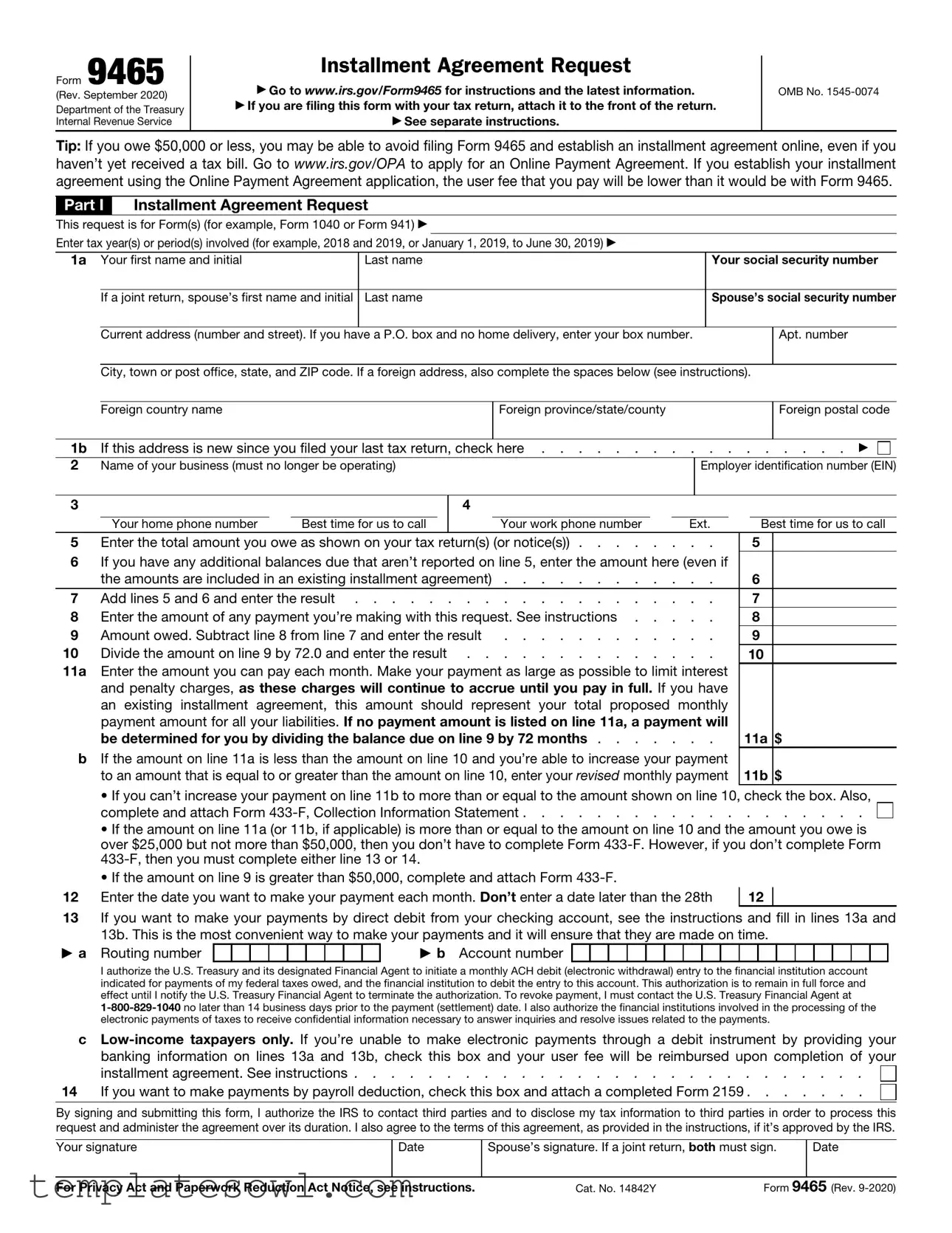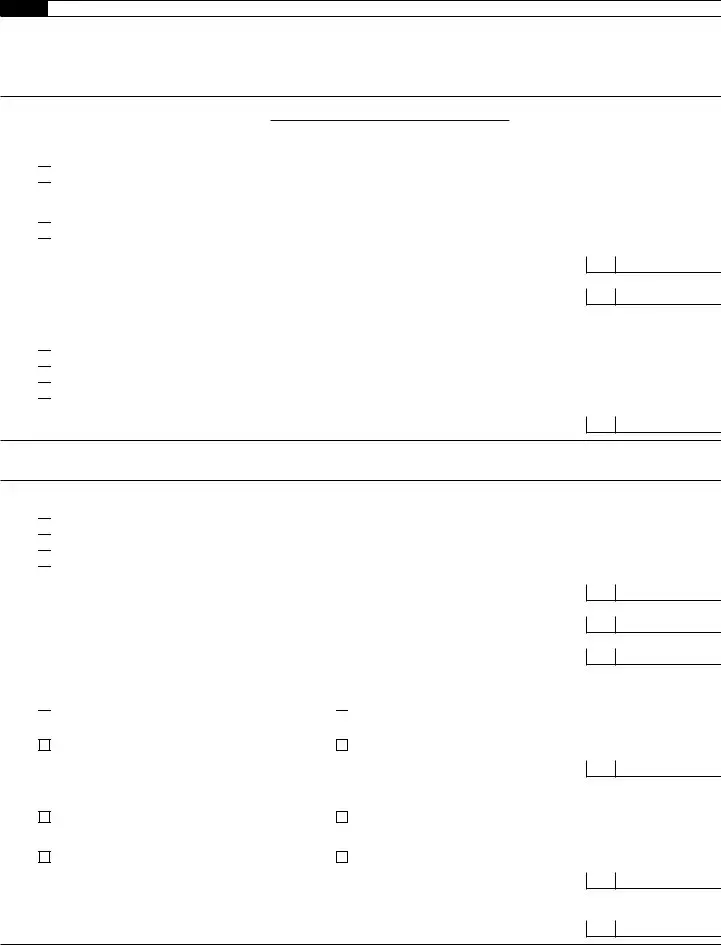What is Form 9465?
Form 9465 is an IRS form used by individuals who owe taxes and wish to request an installment agreement. This allows taxpayers to pay off their tax liabilities in smaller, more manageable monthly payments over time. The form should be filed if a taxpayer cannot pay the full amount owed at once and would like to set up a payment plan with the IRS.
Who needs to fill out Form 9465?
If you owe taxes and cannot pay the full amount by the due date, you may need to fill out Form 9465. It's particularly relevant for individuals who owe $50,000 or less. However, if your tax debt exceeds this amount, additional forms or requirements may also apply.
How can I submit Form 9465?
You can submit Form 9465 in a couple of ways. If you are filing your tax return, simply attach the form to your return. Alternatively, if you are not filing a return, you can mail the completed form separately to the address specified for payment plans in the IRS directions.
Is there a fee to set up an installment agreement?
Yes, there is usually a user fee for establishing an installment agreement. However, if you owe $50,000 or less and set up your agreement online, the fee may be reduced. For those facing financial hardship, a reimbursement of the user fee may be possible upon completing the installment agreement.
How do I determine my monthly payment amount?
Your monthly payment amount is typically calculated by dividing the total amount owed by the number of months in which you plan to pay off the debt. This number should be listed on line 10 of the form. Make sure to propose the largest payment you can manage to minimize interest and penalties.
What if I am unable to pay the proposed monthly payment?
If you cannot afford the payment stated on the form, you may indicate this by checking the appropriate box. You'll then need to fill out and attach Form 433-F, which provides the IRS with detailed information about your financial situation—helping them assess your payment capabilities.
When will I need to start making payments?
Payments should begin the following month after the IRS accepts your installment agreement. On Form 9465, you will specify the date on which you wish to make payments each month, ensuring it falls on or before the 28th day of the month.
Can I change my payment date after submitting the form?
Once your installment agreement is approved, changing the payment date may be more complicated. You would need to contact the IRS directly to discuss any required adjustments. It's advisable to keep that original date unless absolutely necessary to change it.




 Single. Skip question 16b and go to question 17.
Single. Skip question 16b and go to question 17. 
 Married. Go to question 16b.
Married. Go to question 16b. Yes.
Yes. No.
No. Once a week.
Once a week. Once every 2 weeks.
Once every 2 weeks. Once a month.
Once a month. Twice a month.
Twice a month. Once a week.
Once a week. Once every 2 weeks.
Once every 2 weeks. Once a month.
Once a month. Twice a month.
Twice a month. Yes. Go to question 25b.
Yes. Go to question 25b.
 No. Skip question 25b and go to question 26a.
No. Skip question 25b and go to question 26a.